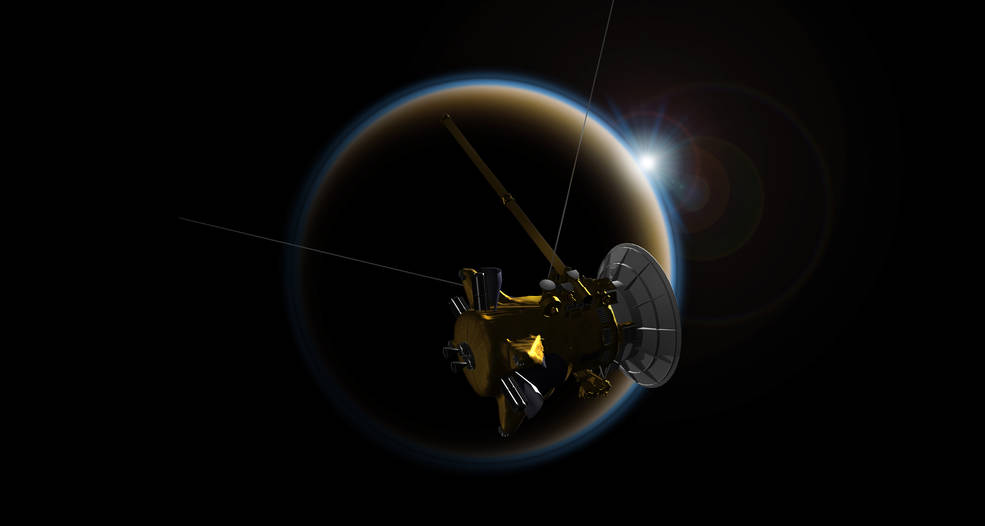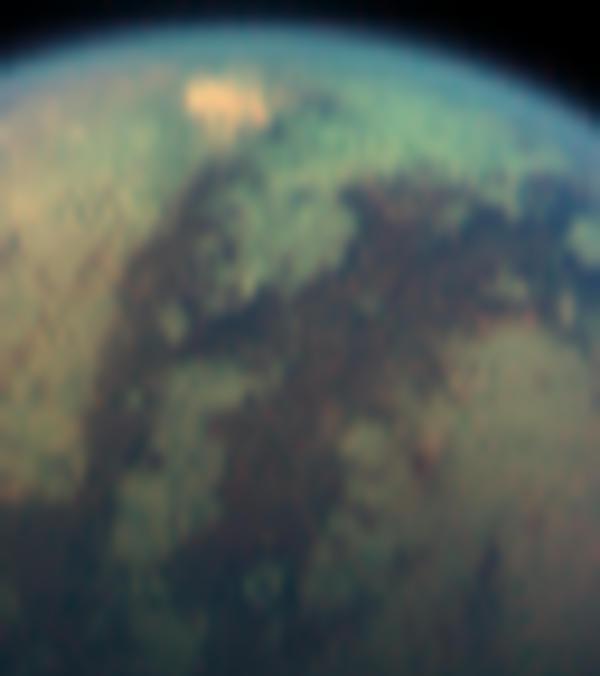Titan Occultations
peering through the haze
Saturn’s largest moon, Titan, is also the only moon with a thick atmosphere. One of the most spectacular discoveries of the Cassini-Huygens mission was Titan’s “methanological” cycle – a system of river channels, lakes, and seas comparable in size to North America’s Great Lakes. Seasonal storms produce methane/ethane rainfall, which may recharge the rivers and lakes. However, methane is rapidly destroyed by sunlight in the upper atmosphere, where it forms larger hydrocarbon molecules, similar to “smog.” The fate of these molecules is unknown. Do they precipitate and blanket the surface?



Comparable in size to Jupiter’s moon Ganymede, Titan’s interior is differentiated into a rocky core and an icy mantle. The crustal material is therefore probably composed mostly of water ice. However, Titan’s atmospheric haze obscures the surface from view. Infrared wavelengths allow us to peer through the haze and absorbing molecules in the atmosphere, but the view is not totally clear.
We designed and carried out a series of occultation experiments to probe Titan’s atmospheric transmission - similar to exoplanet transit spectroscopy. With improved atmospheric parameters, we were able to more clearly “see” Titan’s surface and determine its composition. This approach revealed an icy surface, similar in composition to other icy satellites, but with an imprint of the precipitated hydrocarbon particles.
Further information:
- Hayne, P. O., McCord, T. B., & Sotin, C. (2014). Titan’s surface composition and atmospheric transmission with solar occultation measurements by Cassini VIMS. Icarus, 243, 158-172. Link
- Aharonson, O., Hayes, A. G., Hayne, P. O., Lopes, R. M., Lucas, A., & Perron, J. T. (2014). Titan's surface geology. Titan, by Ingo Müller-Wodarg, Caitlin A. Griffith, Emmanuel Lellouch, Thomas E. Cravens, Cambridge, UK: Cambridge University Press, 2014, p. 63, 63. Link